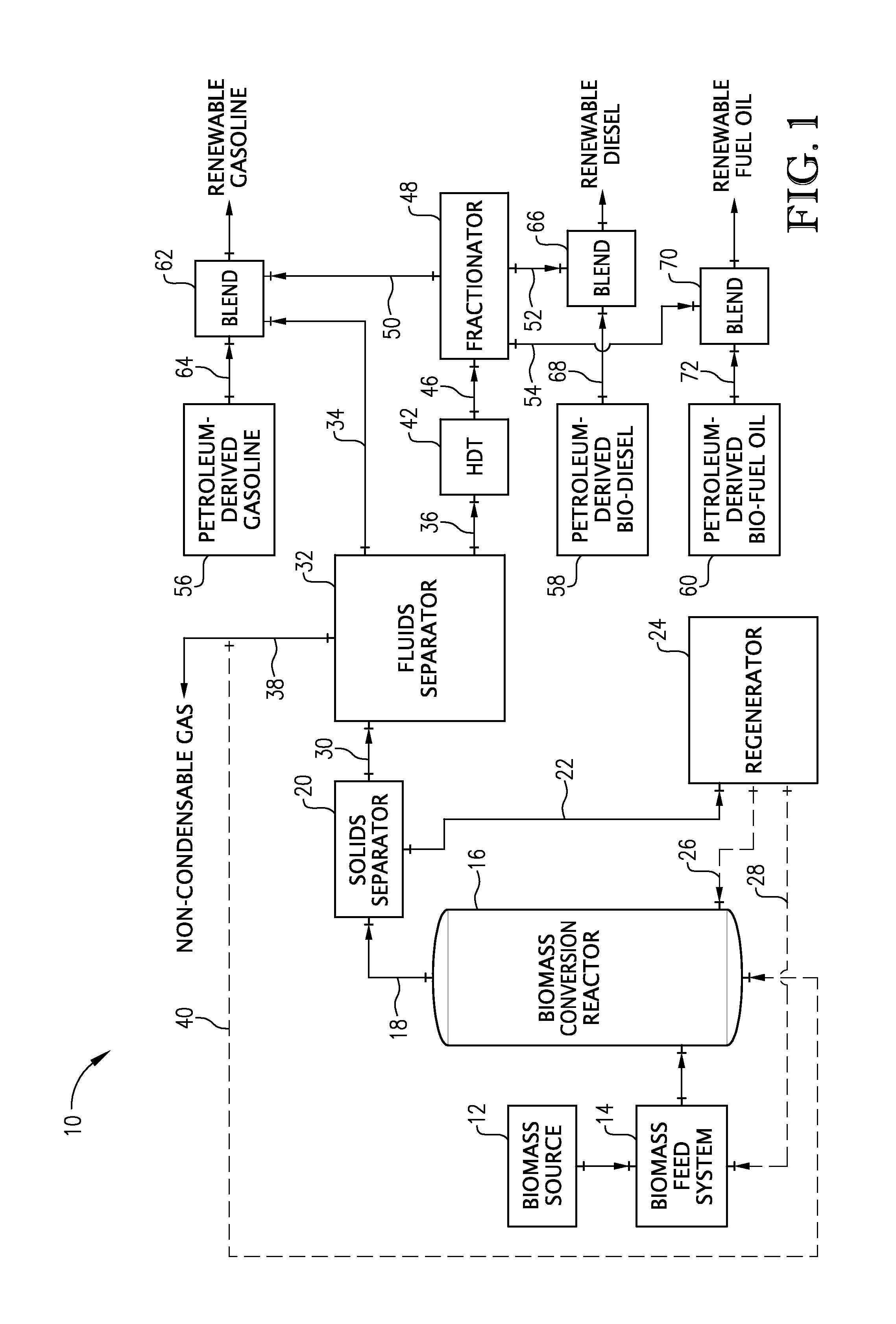Production of renewable biofuels
a biofuel and renewable technology, applied in the direction of biofuels, fuels, separation processes, etc., can solve the problems of limited use of renewable fuels and/or fuel additives, low-quality bio-oils containing high amounts of oxygen produced by existing biomass conversion processes, and relatively inefficient prior upgrading processes
- Summary
- Abstract
- Description
- Claims
- Application Information
AI Technical Summary
Benefits of technology
Problems solved by technology
Method used
Image
Examples
example 1
[0035]A bio-oil, derived from the thermo-catalytic conversion of biomass and containing about 13 wt % oxygen, was separated into a light fraction and a heavy fraction by molecular distillation. The maximum temperature for the separation was 205° C. The mid-boiling point of the heavy fraction was 248.4° C., which is over 100° C. higher than the mid-boiling point of the light fraction, which was 143.8° C. The boiling profiles for each of the streams were determined by simulated distillation. The quantities of light and heavy fractions obtained were 12 wt %, and 87 wt %, respectively, based on the total weight of the bio-oil (bio-oil and water of ˜4 wt % was also recovered and decanted from the light fraction). A portion of the heavy fraction was then hydrotreated under the following conditions, 300-375° C., 800-2000 psi and LHSV=0.5-3 h−1, over a typical Nickel and Molybdenum containing commercial hydrotreating catalyst. The hydrotreated heavy fraction was then separated into a renewa...
PUM
 Login to View More
Login to View More Abstract
Description
Claims
Application Information
 Login to View More
Login to View More - R&D
- Intellectual Property
- Life Sciences
- Materials
- Tech Scout
- Unparalleled Data Quality
- Higher Quality Content
- 60% Fewer Hallucinations
Browse by: Latest US Patents, China's latest patents, Technical Efficacy Thesaurus, Application Domain, Technology Topic, Popular Technical Reports.
© 2025 PatSnap. All rights reserved.Legal|Privacy policy|Modern Slavery Act Transparency Statement|Sitemap|About US| Contact US: help@patsnap.com

